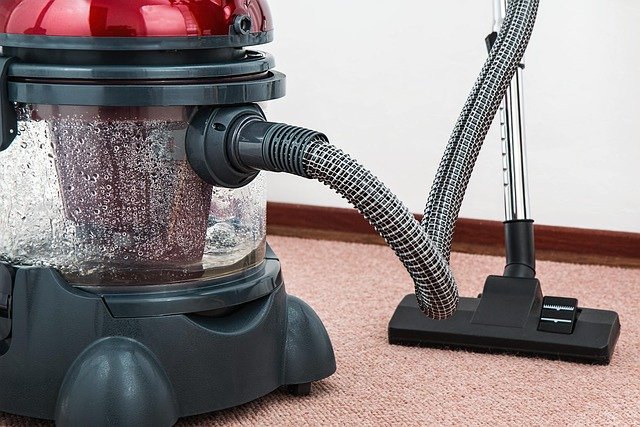Cleaning Services: What to Expect and How to Choose
A clean space makes daily life smoother, healthier, and more productive—but finding the right cleaning services can feel confusing if you’re not sure what’s included, how often to schedule, or what to ask before booking. This guide breaks down the essentials in clear terms, explains common service options, and shows you how to evaluate local services in your area with confidence, whether you’re arranging a one-time deep clean or setting up ongoing maintenance.

What do professional cleaners include?
Professional cleaning services typically offer two broad tiers: routine maintenance and deep cleaning. Routine visits focus on high-traffic areas and recurring tasks—vacuuming and mopping floors, dusting surfaces, wiping counters and sinks, cleaning toilets and mirrors, and taking out trash. Deep cleaning goes further, targeting baseboards, door frames, light fixtures, window tracks, tile grout, inside ovens and fridges (often as add-ons), and built-up scale or soap scum. Many providers also offer move-in/move-out cleaning, post-renovation cleanup, and specialty services like carpet or upholstery cleaning. Always review a provider’s checklist to confirm what’s included, and note any add-ons that require extra time.
bulk_create_keyword in searches
If you stumble across the term bulk_create_keyword while researching cleaning services, it’s typically a placeholder used in digital templates or bulk SEO setups rather than a service feature. In practical terms, you can ignore it and focus on meaningful search phrases like “routine house cleaning,” “deep cleaning,” “office cleaning,” or “eco-friendly cleaners in your area.” When a site uses a generic or placeholder keyword, double-check the actual service pages, scope of work, and customer reviews. The content that matters most will clearly outline tasks, timing, supplies, and policies.
How to choose local services
Start by clarifying your needs and frequency: weekly or biweekly maintenance for busy households, monthly or seasonal deep cleans for less frequent upkeep, and tailored office cleaning schedules for commercial spaces. Shortlist local services with strong, recent reviews and transparent service lists. Ask about background checks, training, and whether teams are employees or contractors. Confirm insurance and bonding for peace of mind. Request approximate timing—how many cleaners and how long—because scope affects both quality and cost. Finally, look for clear communication: a written checklist, straightforward rescheduling policies, and a point of contact if anything is missed.
Scheduling, safety, and supplies
Plan your cleaning around your lifestyle. If you work from home, consider scheduling during quieter hours or when you’ll be out. Clarify entry instructions, pet preferences, and parking. On supplies, ask whether the team brings everything or expects you to provide a vacuum or mop. Many services carry standard, professional-grade products; if you prefer green products or have sensitivities, discuss alternatives in advance. Safety-wise, reputable companies train staff on product use and equipment, avoid mixing chemicals, and follow simple cross-contamination practices (like separating bathroom and kitchen tools). Good providers will also document incidents and offer satisfaction guarantees.
Eco-friendly cleaning and health
Eco-friendly cleaning prioritizes low-toxicity products, safer fragrances (or fragrance-free options), and methods that reduce residue and airborne irritants. Microfiber cloths, HEPA-filter vacuums, and neutral pH cleaners can be gentler on surfaces and indoor air. If you have allergies or asthma, ask about HEPA vacuums and fragrance-free solutions. On the hygiene side, confirm that teams use fresh or sanitized cloths per room and follow hand hygiene protocols. For families with children or pets, request product safety data sheets (SDS) for transparency. Small changes—like ventilating rooms during and after cleaning—can further improve indoor air quality.
This article is for informational purposes only and should not be considered medical advice. Please consult a qualified healthcare professional for personalized guidance and treatment.
Preparing your home for a visit
A bit of upfront prep maximizes the value of each appointment. Declutter surfaces so cleaners can reach more areas in less time. Secure valuables and store sensitive paperwork. Leave instructions for special surfaces (marble, unfinished wood) that need gentle care. Point out problem spots like heavy limescale, mildew, or baked-on oven grime so teams can allocate time appropriately. If you’re scheduling a move-out or post-renovation clean, send photos or a brief description of debris or dust levels; that helps providers assign the right crew size and tools. Clear expectations lead to more thorough, efficient results.
Beyond homes: offices and rentals
Commercial and short-term rental spaces come with different priorities. Offices often need evening or early-morning service, touchpoint disinfection, and replenishment of consumables like paper towels and soap. Short-term rentals benefit from standardized checklists, quick turnover times, linens handling, and photo-based quality checks. For both, consistency matters: recurring teams, documented scope, and issue-tracking help maintain standards. If you manage multiple locations, consider a provider with route planning and proof-of-service tools that keep scheduling and communications streamlined.
What to expect after the first clean
Your first appointment sets the baseline. Heavily used spaces or long intervals since the last clean may take longer upfront, with subsequent visits being faster and more consistent. Afterward, review the checklist and give specific feedback—what you loved, what to adjust, and any priorities for next time. Good providers welcome constructive notes and will update instructions for future visits. If areas were missed, reputable services make it right with a touch-up or plan adjustment. Over time, a steady cadence—weekly, biweekly, or monthly—keeps results predictable and surfaces easier to maintain.
Final thoughts
Cleaning services work best when expectations, scope, and communication are clear. Focus on reputable local services in your area that offer transparent checklists, trained staff, appropriate supplies, and responsive support. Whether you choose routine upkeep or deep cleaning, a little preparation and ongoing feedback go a long way in achieving a clean, comfortable space that fits your lifestyle.






